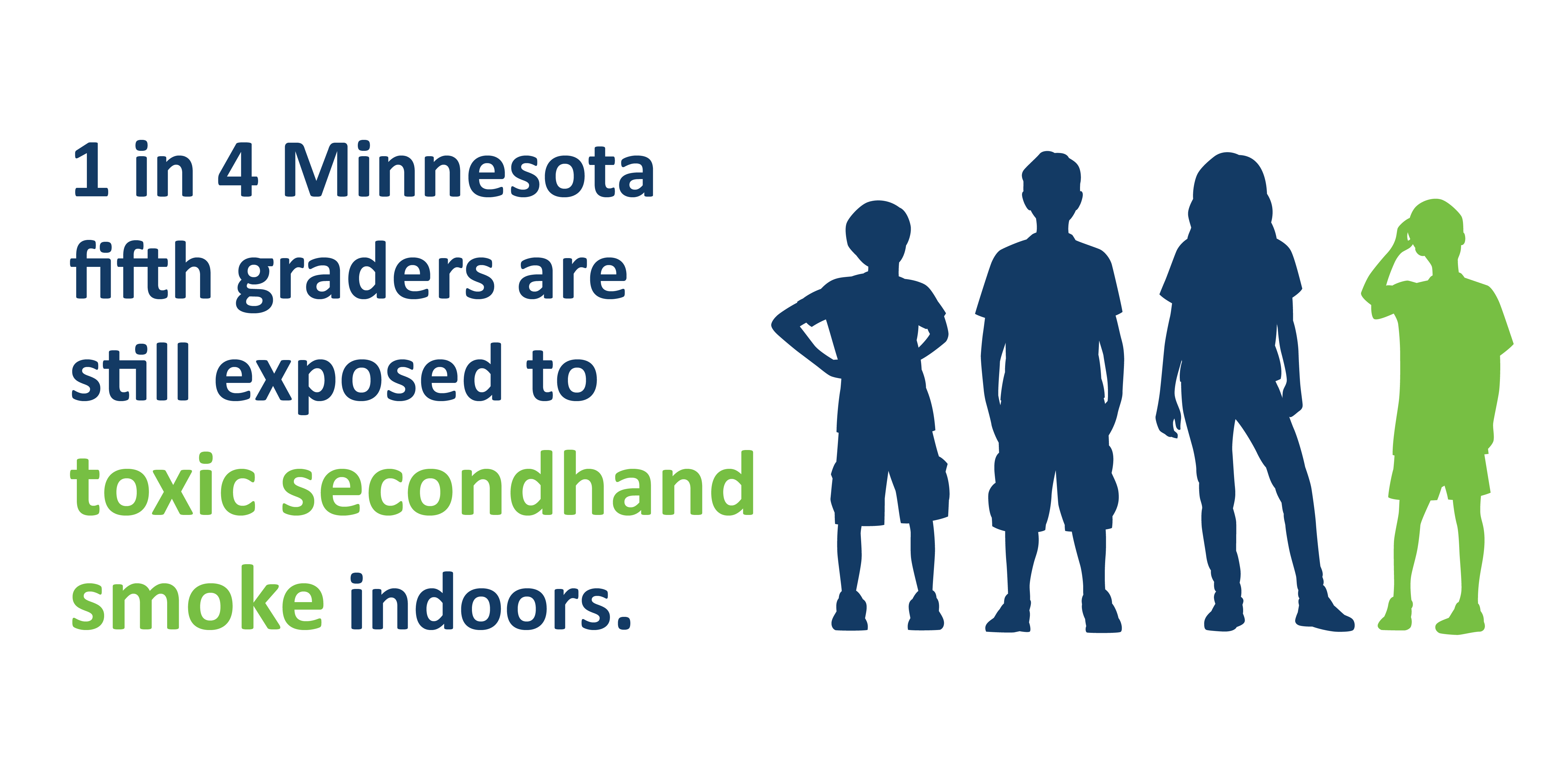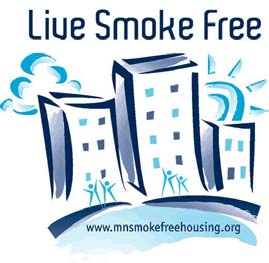Commercial Tobacco Prevention and Control
Tobacco Topics
- Behavioral Health
- E-cigarettes and Vapes
- E-cigarette School Toolkit
- Flavored Tobacco
- Menthol Tobacco
- Nicotine
- Quitting Tobacco
- JUUL Settlement
- Helping People Quit
- Secondhand Smoke
- Tobacco and COVID-19
- Tobacco 21
- Tobacco Taxes
- Traditional Tobacco
Related Topics
Contact Info
Health Risks of Secondhand Smoke
Secondhand smoke is exhaled by a person who is smoking. It is also comes from the lit end of tobacco products, like cigarettes and cigars. Secondhand smoke is a dangerous mixture of over 7,000 chemicals, including 70 that cause cancer.1
Secondhand smoke causes early death and disease in both children and adults who do not smoke.2 It increases risk for heart attacks, heart disease and stroke, and lung cancer. For example, it is estimated that secondhand smoke caused nearly 34,000 heart disease deaths each year during 2005–2009 among adult nonsmokers in the United States.1 There is no safe level of secondhand smoke exposure.
Secondhand smoke is especially dangerous for children and infants.
Children are particularly vulnerable to the risks of secondhand smoke as they are still growing and may not have control over their surroundings to avoid exposure.2
Children whose parent or guardian smokes in the home or vehicle may be at increased risk for secondhand smoke-related disease and illness, and infants are at a greater risk for sudden infant death syndrome (SIDS).2

Nearly 1 in 4 Minnesota fifth graders are still exposed to secondhand smoke indoors, and 1 in 6 are exposed in vehicles.3
Secondhand smoke is a powerful trigger for asthma attacks and other breathing problems.
 In Minnesota, kids with asthma are more likely to report being exposed to secondhand smoke than their peers.4 One in three Minnesota 5th graders with asthma are exposed to secondhand smoke, compared to about one in four 5th graders without asthma.3
In Minnesota, kids with asthma are more likely to report being exposed to secondhand smoke than their peers.4 One in three Minnesota 5th graders with asthma are exposed to secondhand smoke, compared to about one in four 5th graders without asthma.3
Children and infants exposed to secondhand smoke may experience more frequent and severe asthma attacks, as well as respiratory problems like pneumonia or bronchitis.
Learn more about Asthma in Minnesota.
Communities are working to protect people from secondhand smoke.
Many children and families are still exposed to secondhand smoke in homes, cars, and parks. Completely eliminating smoking indoors is the only way to protect people from secondhand smoke.2
The Minnesota Comprehensive Tobacco Control Framework: 2016-2021 (PDF) recommends expanding clean indoor air policies to include locations like cars with children, lodging, treatment facilities, and other places used by the public.
Communities can reduce exposure through smoke-free policies.
Local Minnesota communities are bringing cleaner, safer air to residents by working with local property managers and to implement smoke-free housing policies. Between November 2013 and August 2015, Statewide Health Improvement Partnership (SHIP) grantees and their partners brought smoke-free policies to 365 rental properties around the state.
Parents can eliminate smoking in their homes and cars.
Parents can help protect their families from secondhand smoke by eliminating smoking in their home and car, asking people not to smoke around their family and children, or by quitting tobacco altogether.
Learn more about Quitting Tobacco.
Download this information: Health Risks of Secondhand Smoke (PDF)
Learn more
- Secondhand Smoke (CDC)
- Smoke-Free, Tobacco-Free Places: Housing (Public Health Law Center)
- Smoke-Free Public Housing: Healthier and Safer Living for Minnesotans
- Minnesota Clean Indoor Air Act
- SHIP Evaluation Studies: Smoke-Free Housing Policies
- Tobacco NUMBRS - Tobacco and Nicotine Use in Minnesota: Briefs, Reports, and Statistics
![]() Interested in more data on secondhand smoke and other topics? Visit the Minnesota Public Health Data Access portal.
Interested in more data on secondhand smoke and other topics? Visit the Minnesota Public Health Data Access portal.
Live Smoke Free

Live Smoke Free helps people find solutions to secondhand smoke exposure in their apartments and provides resources for finding smoke-free apartment buildings.
Visit mnsmokefreehousing.org.
References
- United States. Public Health Service. Office of the Surgeon General., The health consequences of smoking--50 years of progress : a report of the surgeon general. 2014, Rockville, MD: U.S. Department of Health and Human Services, Public Health Service, Office of the Surgeon General. 2 volumes.
- United States. Public Health Service. Office of the Surgeon General., The health consequences of involuntary exposure to tobacco smoke : a report of the Surgeon General. 2006, Rockville, MD: U.S. Dept. of Health and Human Services, Public Health Service, Office of the Surgeon General. xvii, 709 p.
- Minnesota Student Survey. 2016.
- Minnesota Youth Tobacco Survey. 2014.